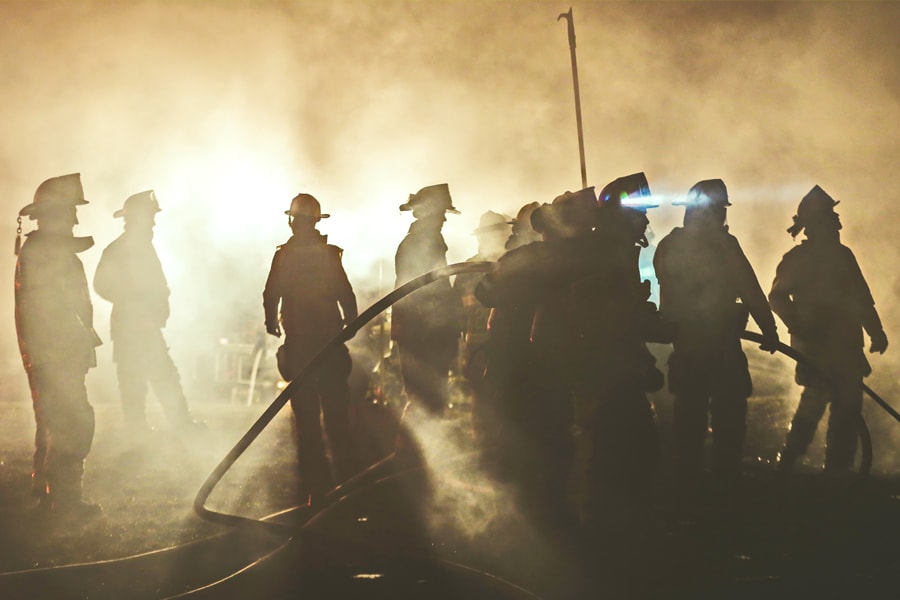
CMU Model Is Nation’s Best Fire Predictor
Pittsburgh adopts CMU algorithm to accurately pinpoint risk of fire in commercial properties
By Scottie Barsotti
Media Inquiries- Heinz College of Information Systems and Public Policy
- 4120268-5492
There are over 22,000 commercial properties in the City of Pittsburgh. Many of them are aging, have not been properly inspected in years and pose a high risk of fire. For Michael Madaio, a Ph.D. student at Carnegie Mellon University’s Human-Computer Interaction Institute, that was a glaring problem.
Madaio points to some recent high-profile and deadly fire incidents, such as the "Ghost Ship" warehouse fire in Oakland, California, in 2016, and others in London and Brooklyn in 2017.
“Those incidents revealed that those properties were on the radar of other municipal agencies for safety violations, but had not recently been inspected for fire safety violations,” Madaio said. “[This was] due to a lack of inter-agency data sharing and, perhaps, a lack of data-driven proactive risk reduction efforts.”
Madaio added that many cities, Pittsburgh included, face a big challenge in working with limited personnel and budgets. That gap between the need to reduce risk and the resources available made this project all the more urgent.
Madaio worked with the City of Pittsburgh and fellow CMU students to see if technology could determine which of those 22,000 buildings was most likely to catch fire next.
Madaio’s collaborators included graduate and undergraduate students from the School of Computer Science, Heinz College of Information Systems and Public Policy, Dietrich College of Humanities and Social Sciences, College of Engineering and the University of Pittsburgh. Many of the collaborating students came to the project through Madaio’s work as a board member for the Students for Urban Data Systems student organization at CMU.
The team built a predictive algorithm, training it on historical fire incident and inspection data as well as business permits and property condition information. The tool analyzed the city’s commercial properties and assigned each property a fire risk score. The algorithm scanned the thousands of Pittsburgh properties and labeled 57 as having the highest risk.
“This will make us one of the safest cities in the world for fire prevention.” — Pittsburgh Mayor Bill Peduto
The model’s prediction was extremely accurate. Of those 57 high risk properties, 50 experienced a fire incident of some type within a year of being tagged by the system.
With that kind of predictive power in hand moving forward, officials from the Pittsburgh Bureau of Fire can prioritize which properties get inspected and stop more fires before they occur.
“This will make us one of the safest cities in the world for fire prevention,” said Pittsburgh Mayor Bill Peduto at a recent news conference announcing the project.
Madaio said the model he and the Metro21 Smart Cities Institute, a university-wide research center housed at Heinz College, created is state of the art in fire prevention and nearly twice as predictive as the next most accurate model.
“When I came here, I wanted to get into data analytics,” said Palak Narang, who is a student in the Heinz College Master of Information Systems Management program.
She said getting to work on a project with this kind of impact was more than she ever expected when she came to Heinz.
“This is big. This is a commercially viable model that is going to be used,” she said
Smart Cities are Safer Cities
Metro21 is ambitiously pursuing smart cities research that can be deployed to not only improve the lives and opportunities of citizens but make communities measurably safer.
The success and accuracy of this fire prevention tool — a tool that will only get more accurate over time — is a testament to Metro21’s impact in the region. Soon, the impact of this project will spread to other parts of the country.
“The [Pittsburgh] fire department is already using this,” Madaio said. “And we are partnering with fire departments from several other cities, including Dallas, to help them adapt the model to their cities.”
The National Fire Protection Association named this research program a “best practice” for improving public safety, and GovTech awarded the project the “Innovation of the Month” award in January 2018. The model has been promoted to the MetroLab Network — of which Metro21 is a founding member — and Metro21 has made their code open-source in order to facilitate further adoption. The results from this work have also been accepted for publication in the prestigious Knowledge Discovery and Data Mining (KDD) 2018 conference.
“We may never know for certain how many fires, fire deaths and amount of property damage may be avoided with risk reduction policies informed by predictive risk modeling. But in 2016 alone, there were 475,500 structure fires in the United States, causing almost 3,000 civilian deaths and nearly $8 billion in property damage, according to the NFPA,” Madaio said.
“We hope that cities’ adoption of this model to inform their risk reduction efforts can help fire departments reduce those numbers and improve public safety.”